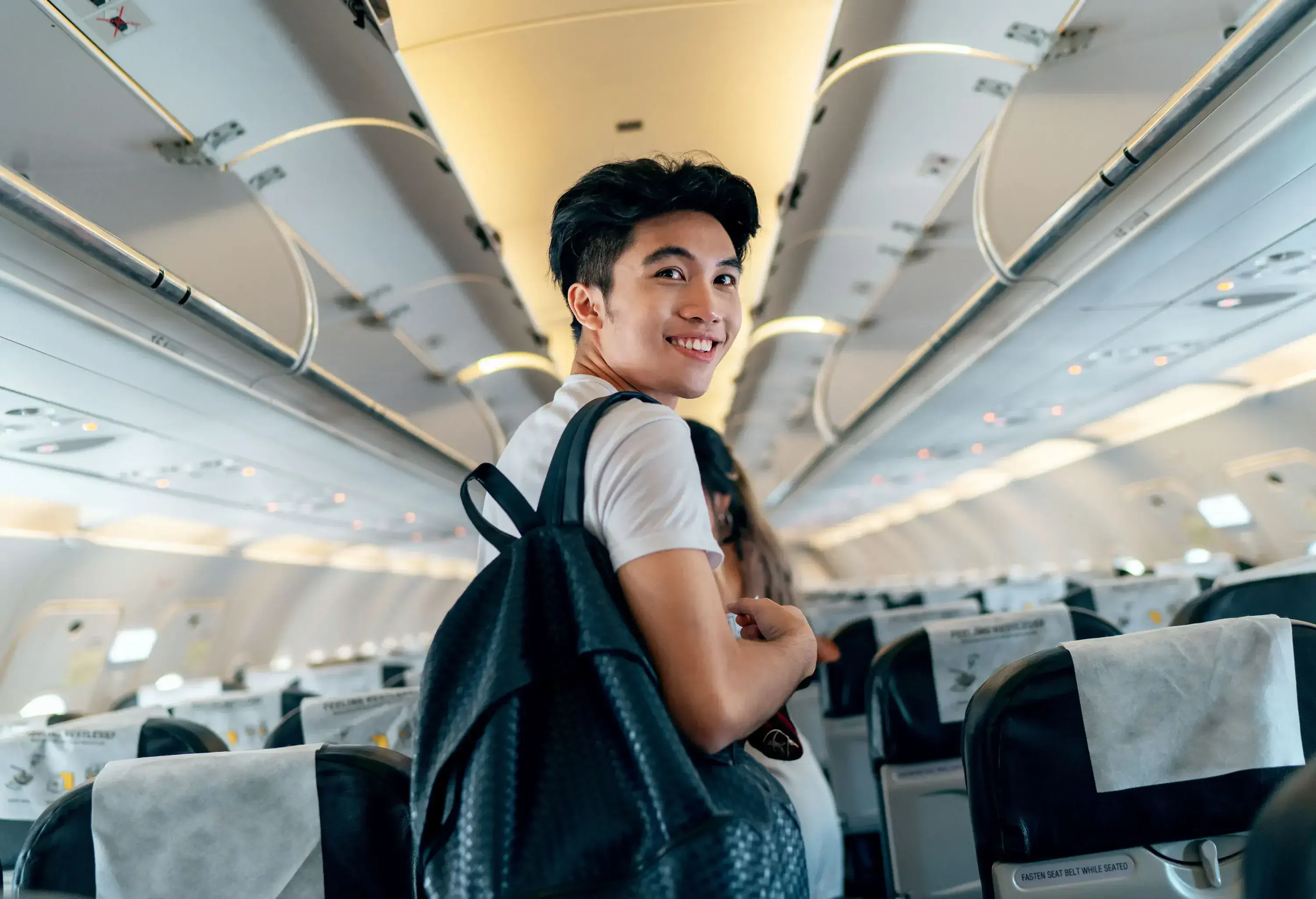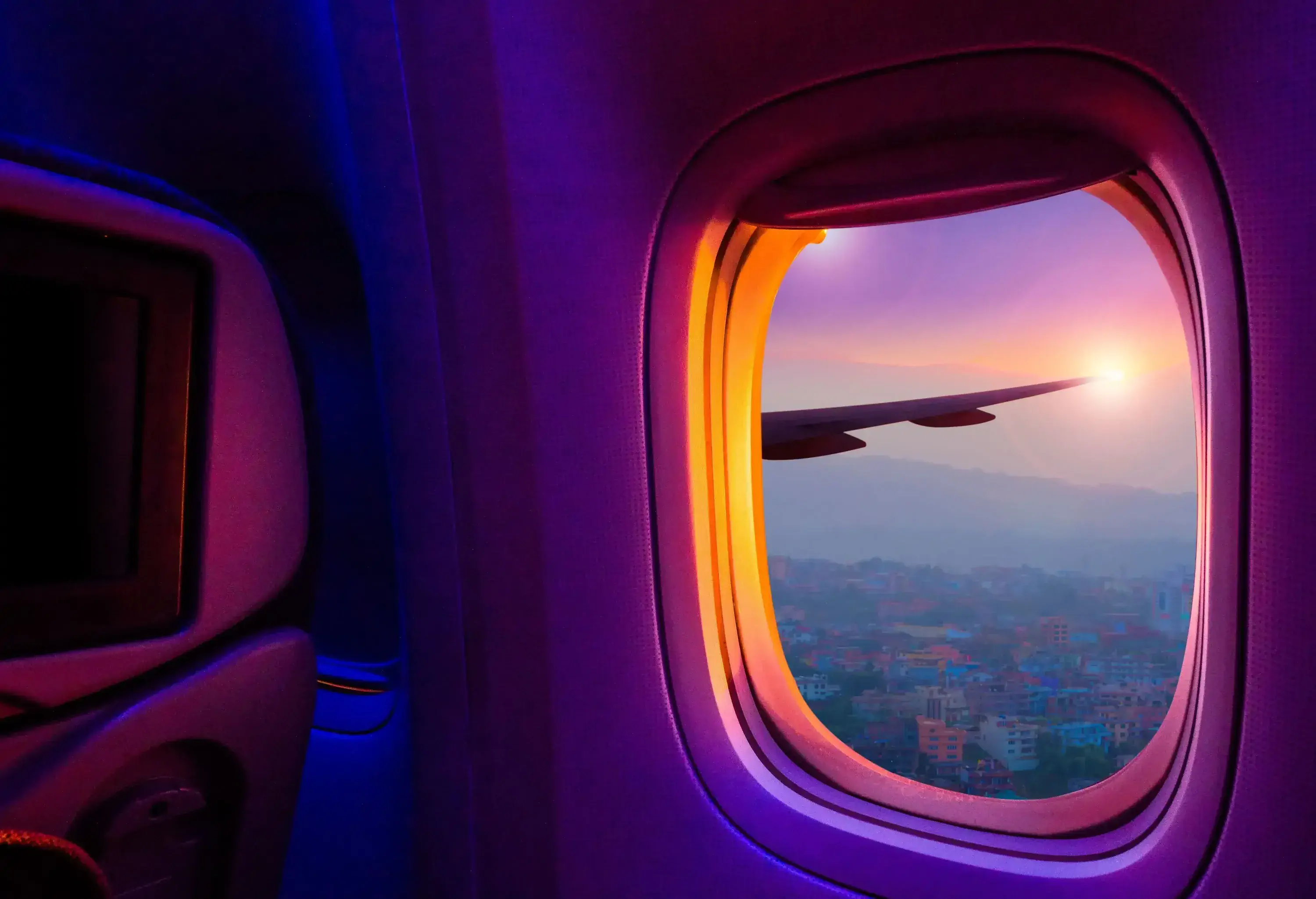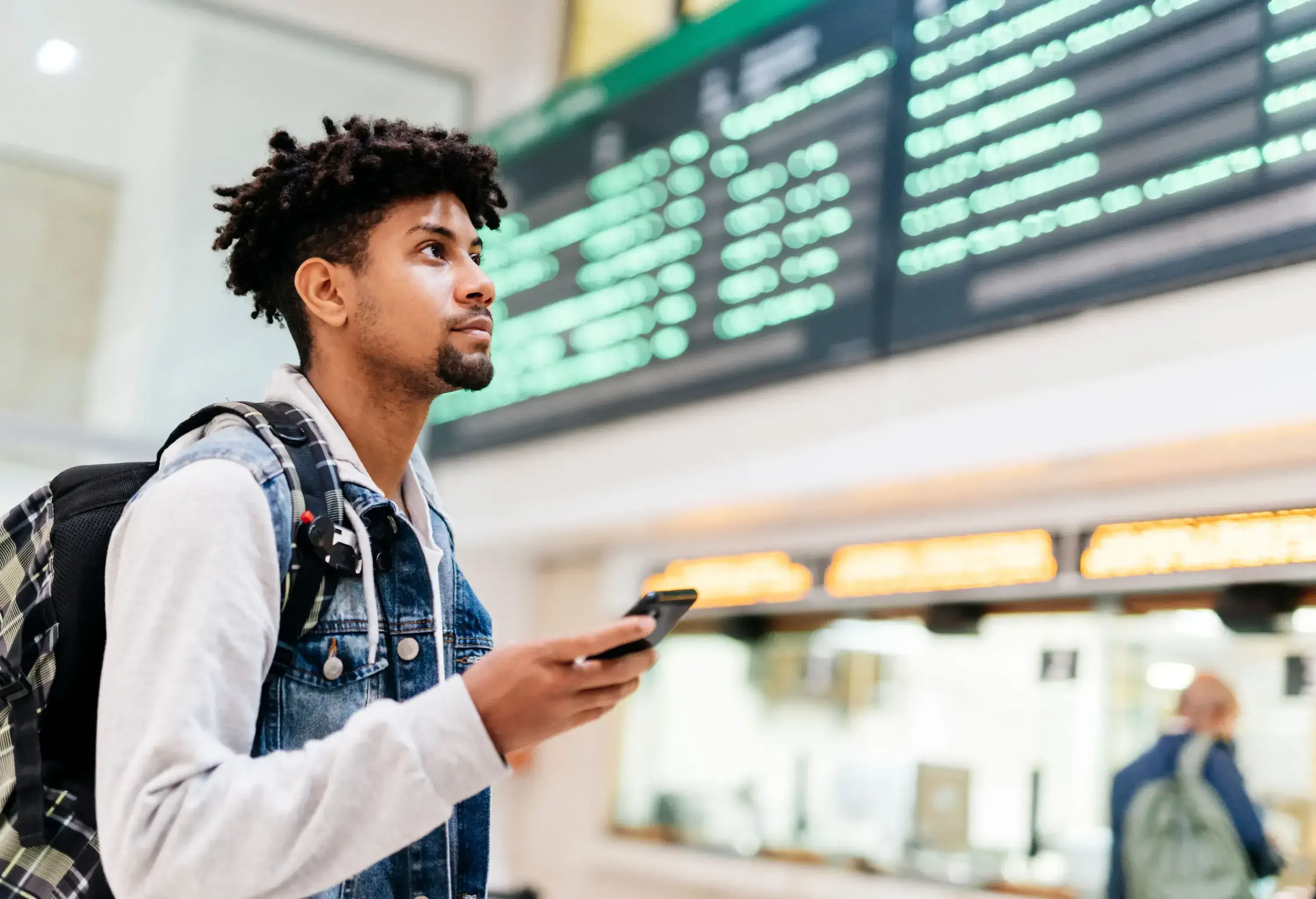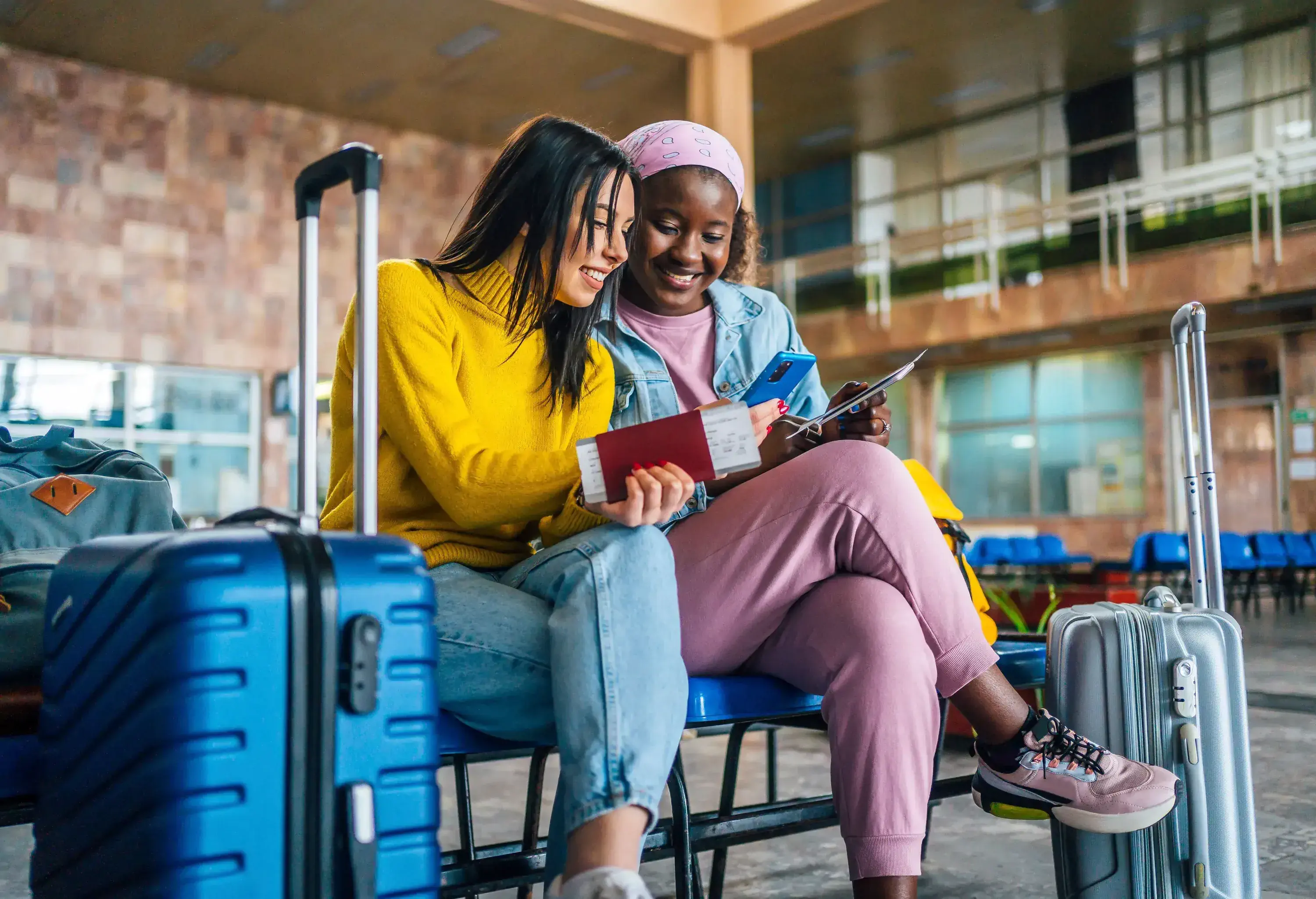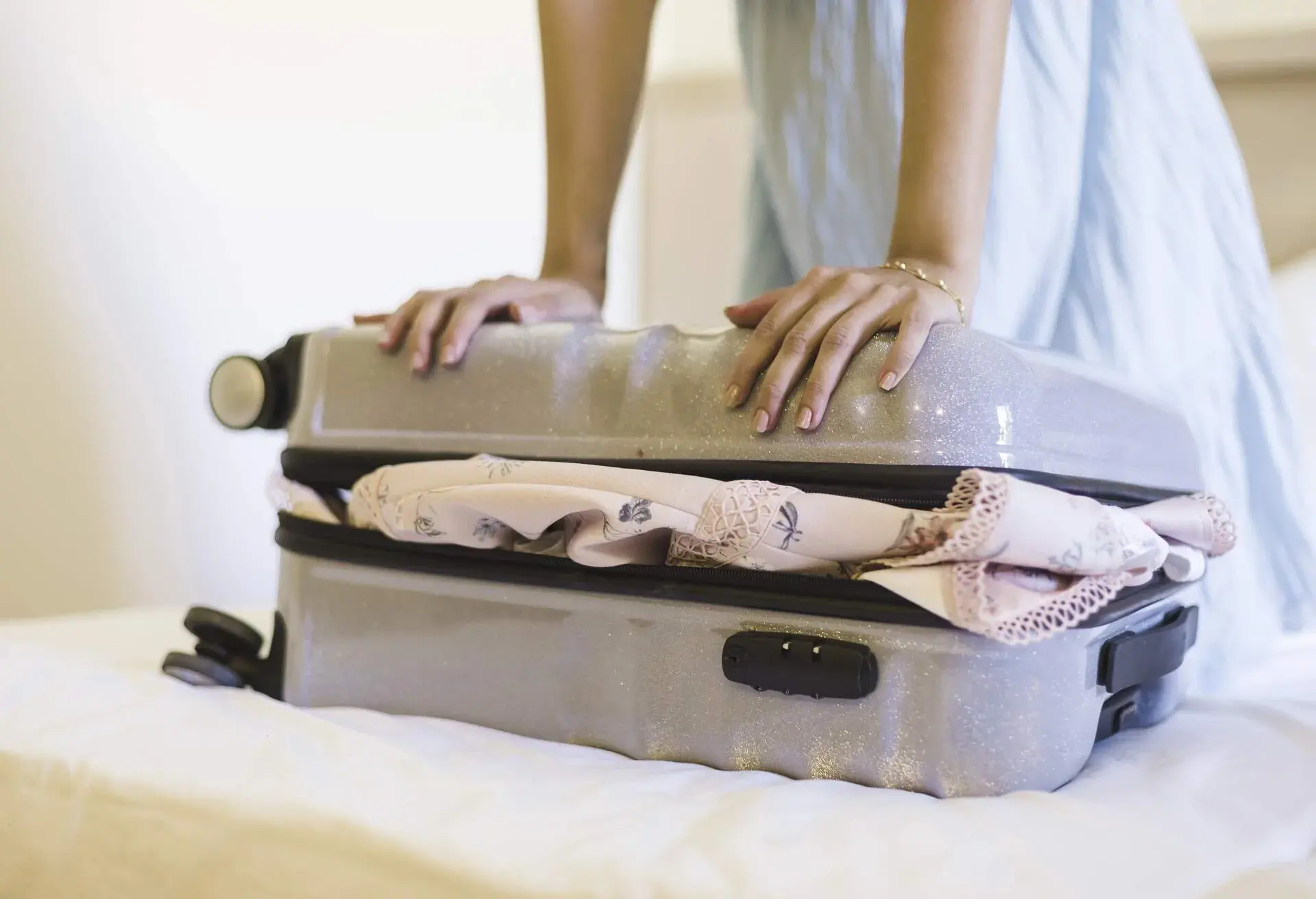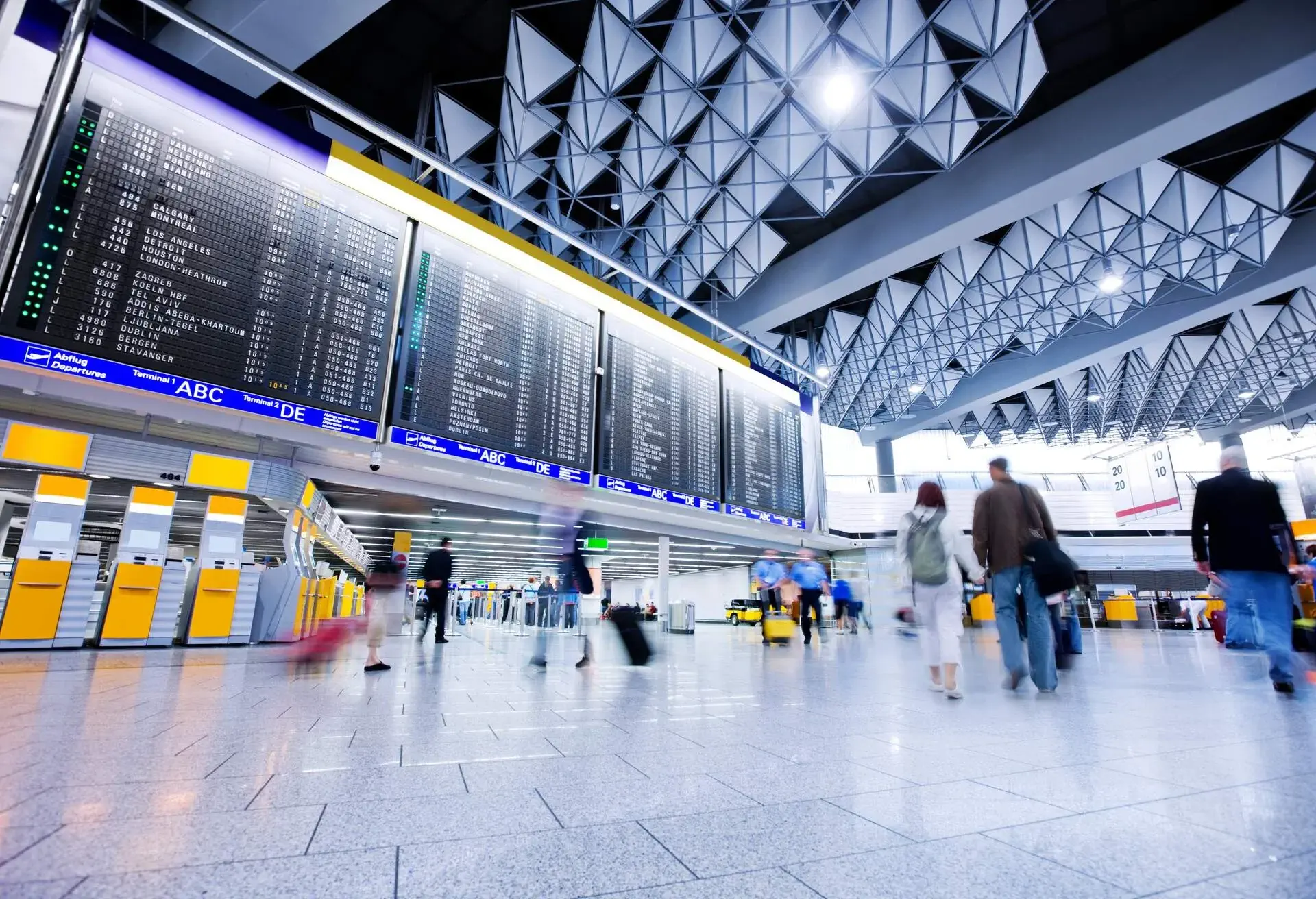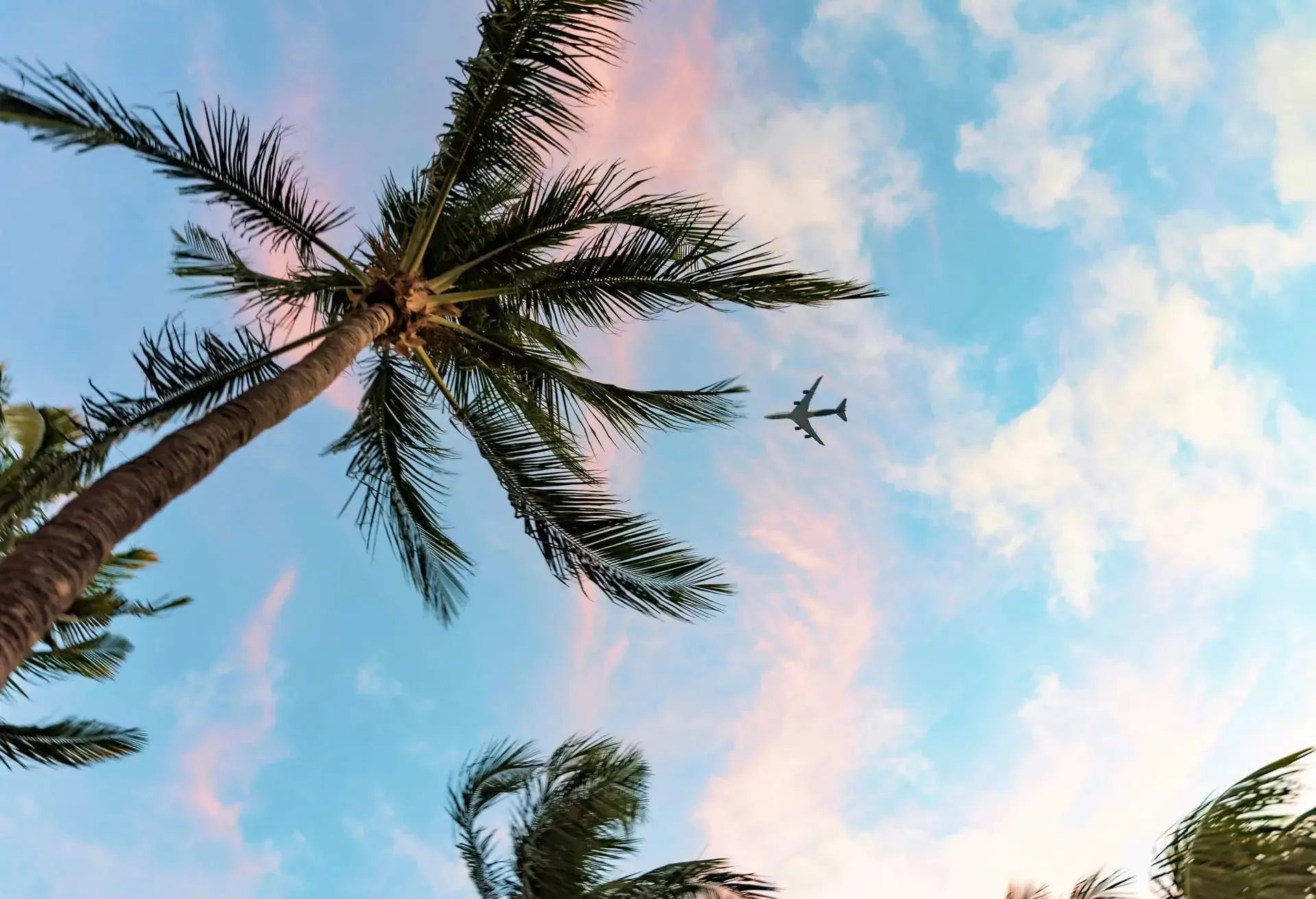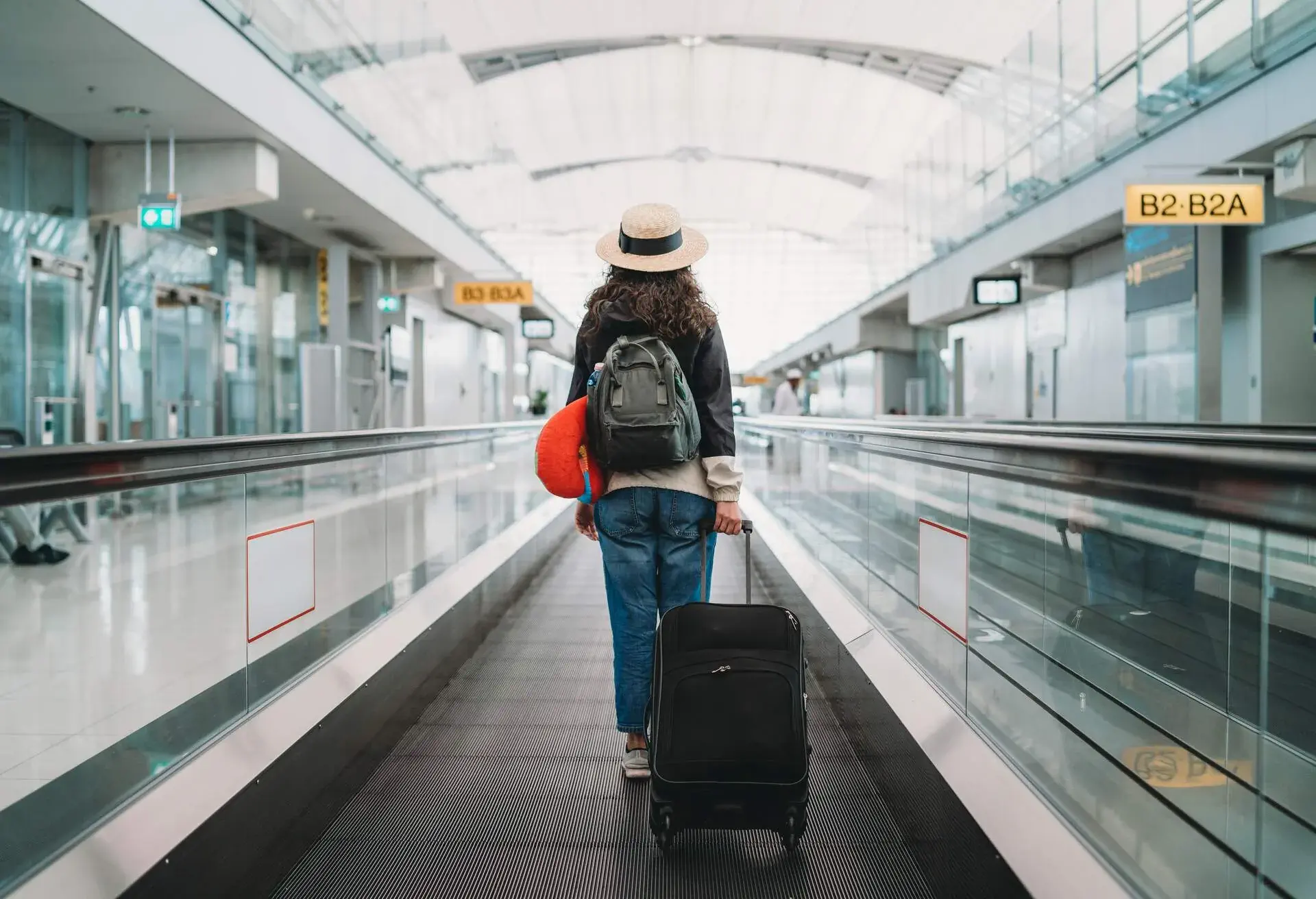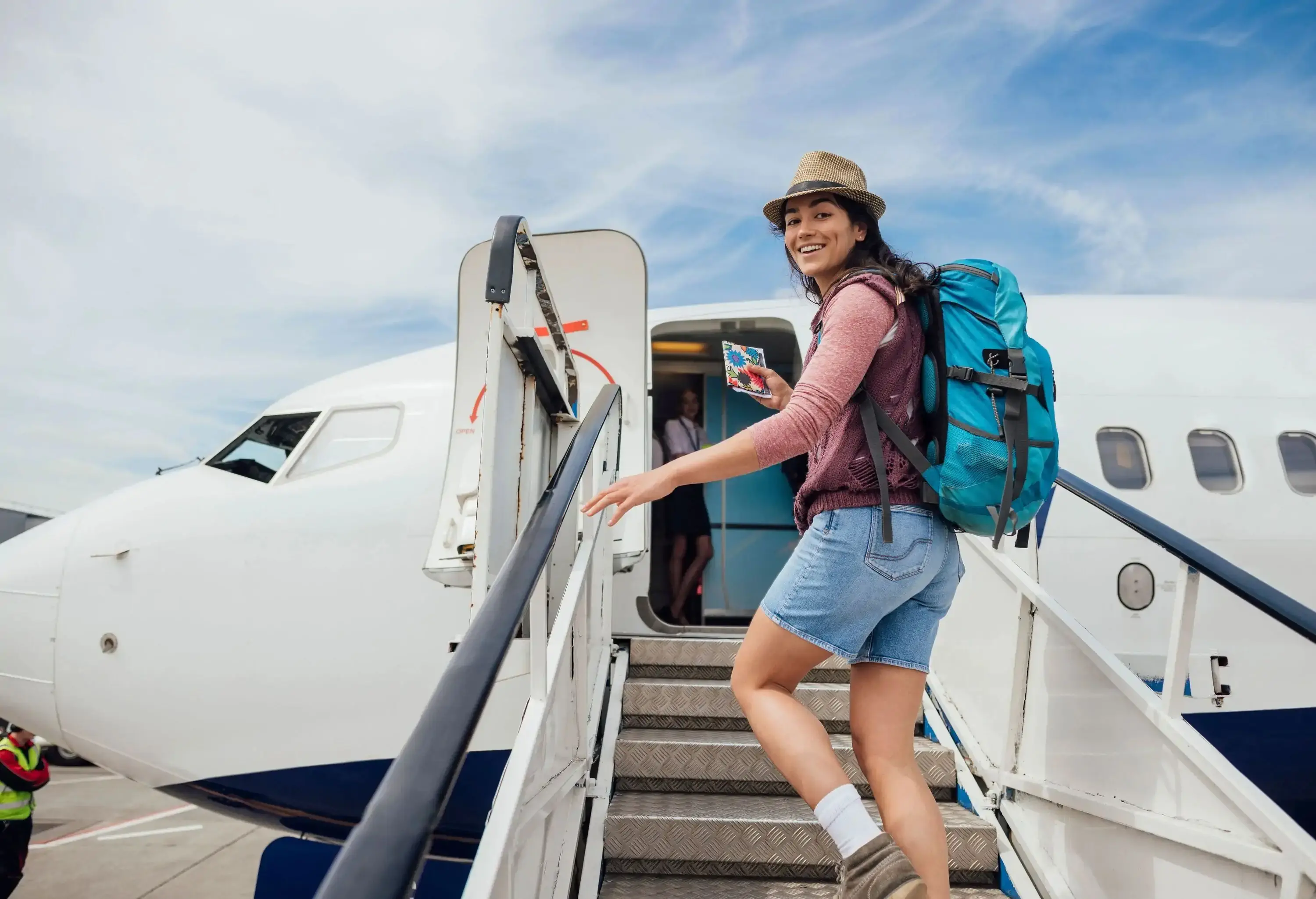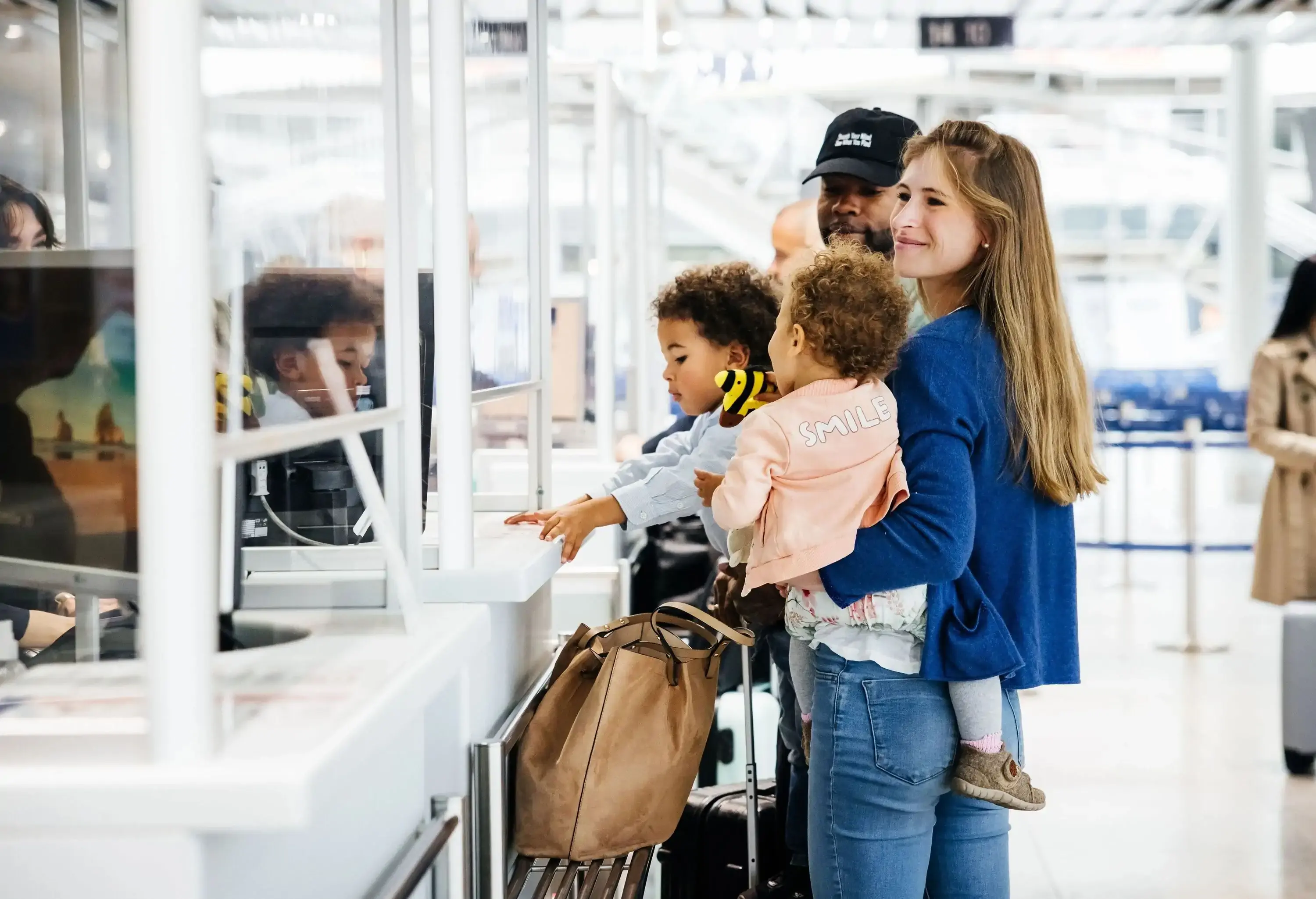No matter how you paint it, flying is a hassle. Even if you love the sense of romance and adventure it can inspire, from airport to airplane there are still many, many rules to follow and and pitfalls to avoid.
Yet there are also plenty of ways to help ease the logistical stress and dramatically up the comfort and calm. From before boarding to in-flight advice, here are my essential tips for flying.
The first step towards an easier flight is to download the KAYAK mobile app. Not just for booking flights, hotels and cars – the app puts all the information you need in the palm of your hand every step of the journey.
Tips before flying: at the airport.
The best way to avoid stress on the plane is to prepare properly before boarding. Prevention is the best medicine! Create a checklist of your essentials. Include everything you’ll need to navigate the airport seamlessly as well as what to take on board.
Know the checked baggage restrictions.
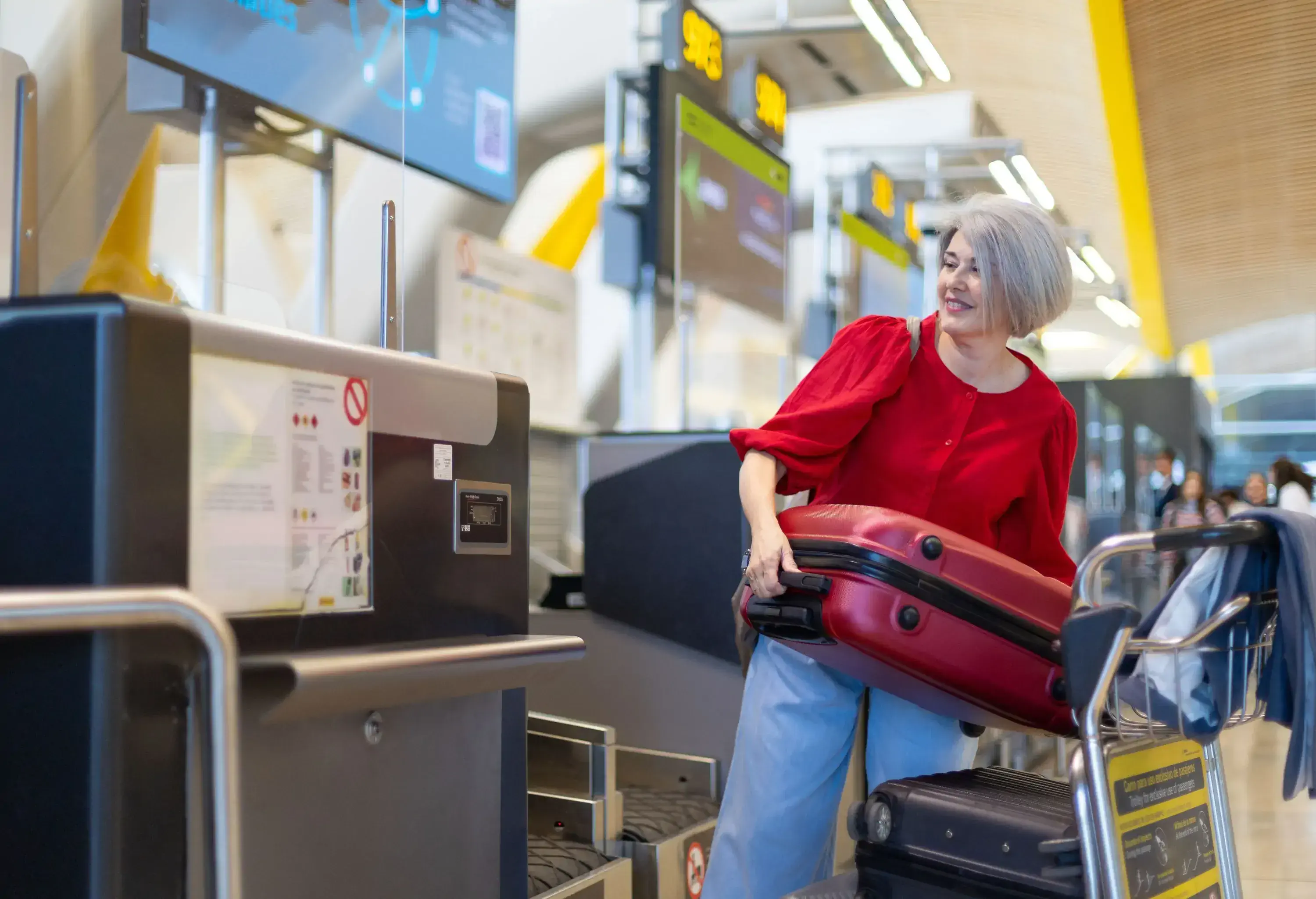
We’ve all seen stressed passengers frantically repacking cases at the check-in desk because they didn’t read the baggage rules. Not exactly a relaxed start to any vacation. Most airlines strictly enforce bag dimensions and weight limits and apply hefty fines for last-minute mistakes.
Avoid them by checking your airline’s guidelines on their website and making sure your bags conform to them. And if you’ve got a credit card, especially one that partners with an airline, check what perks are available. Many include free checked bags.
Comply with carry-on guidelines.
Though it’s true that many major airlines won’t weigh your carry-on, they can. Stay under the weight limit to avoid this potential pitfall.
Even more importantly, be sure your carry-on follows the airline’s dimension restrictions, which is enforced more frequently. If your bag won’t fit in the dreaded sizing bins at the gate, you’ll need to pay to check it instead. Remember that carry-on size and weight restrictions can vary by airline – especially in Europe
Don’t overpack your personal item.
Your carry-on bag will go in the overhead bin on the plane. But your personal item – like a handbag or briefcase – will typically need to go under the seat in front of you. That’s also your only available legroom, so the smaller your bag, the more space you’ll have to stretch out. If like me you’re north of six feet tall, you’ll know that every inch of space counts – especially long haul.
Keep only what you specifically need for your flight in your personal bag. That way, you have everything you need immediately available and nothing you don’t.
Pick the right row.
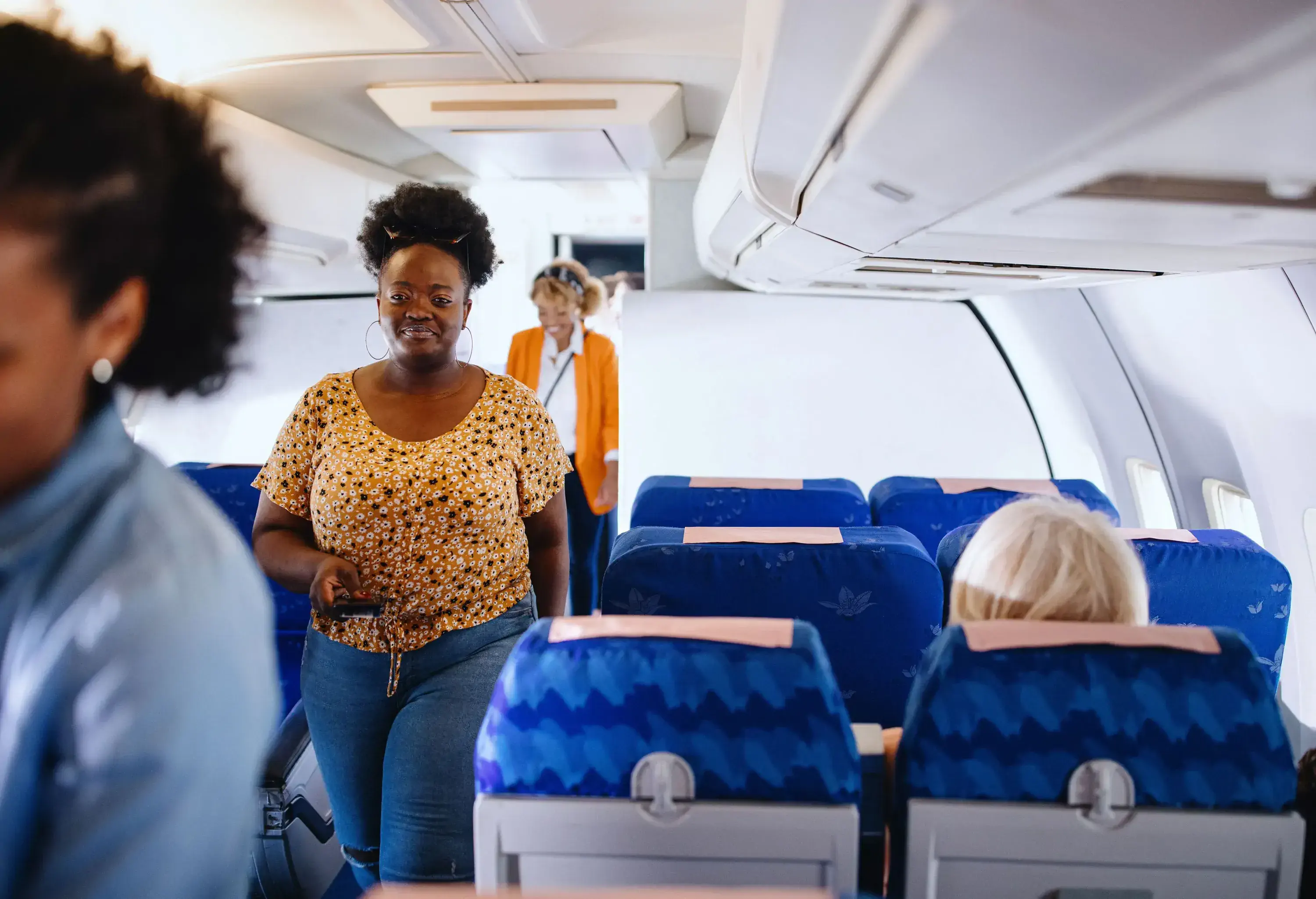
If you’re traveling internationally and don’t have any form of fast-track status at your destination, choosing a seat toward the front will get you off the plane before potentially hundreds of people sitting behind you. This can save you tons of time at border control and, as an added bonus usually gives you a smoother ride than sitting behind the wings.
If timing isn’t a concern for you and on-board comfort is a priority, look for seats toward the rear of the plane. This increases your chance of having an empty seat next to you, as planes are typically filled from front to back when passengers don’t choose their own seats. Avoid the back row though. This is typically the worst seat on the plane – they’re close to the galley and toilets and often don’t recline.
Track your flight.
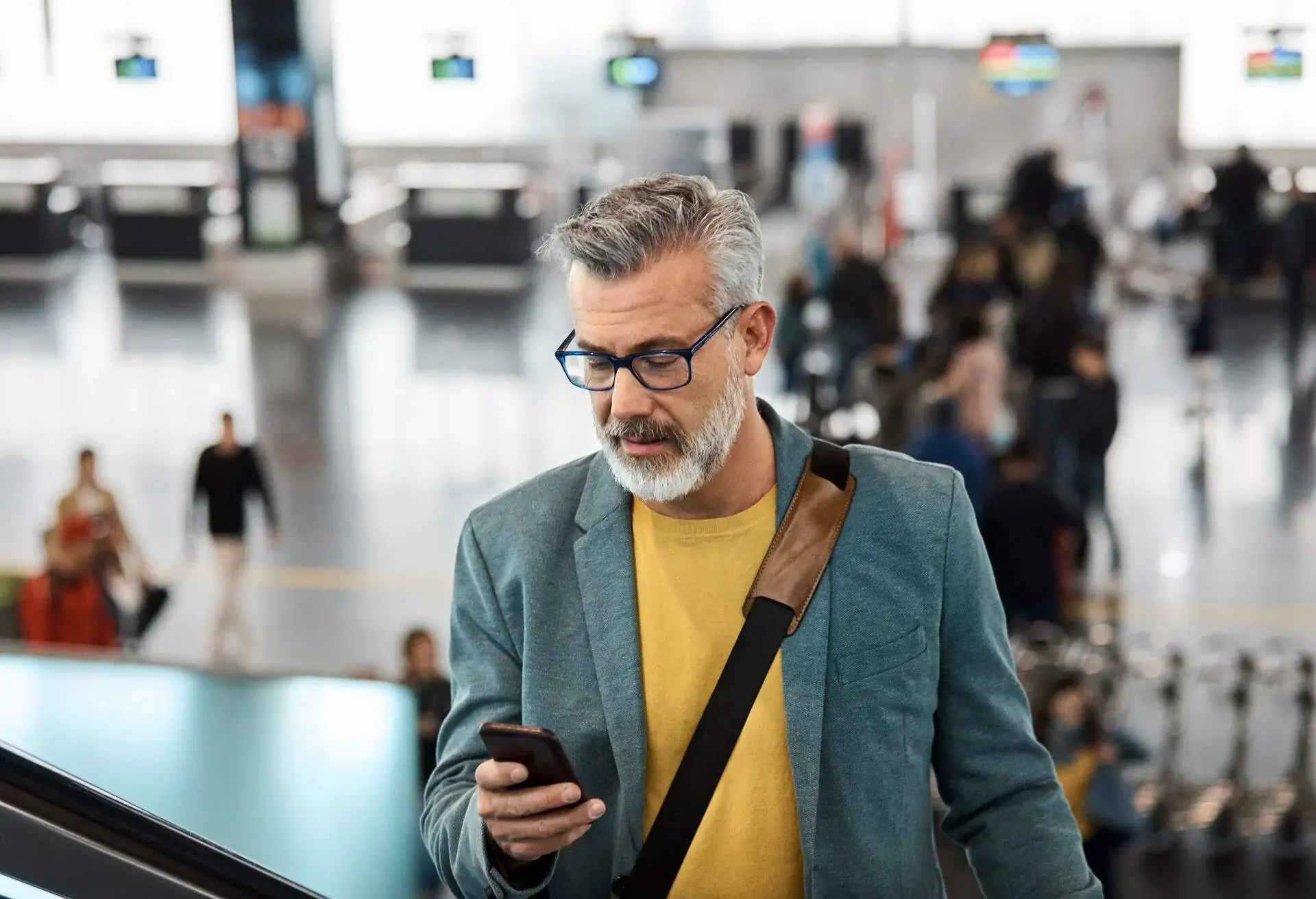
One of the most stressful aspects of flying can be the ‘not knowing’ of flight delays, or even cancelations. There are now lots of apps (like FlightStats) that put the power in your hands with real-time flight tracking. KAYAK has its own Flight Tracker, which helps you know where your plane is anywhere around the world. It gives you the latest updates on changes to arrival or departure times, cancelations and gate information.
Keeping up to date keeps your stress levels down and won’t leave you racing for the gate at the last minute.
Share your flight number.
If you’re being met or picked up on arrival at your destination, share your flight number with who you’re meeting. Arrival times change frequently thanks to runway delays, changing weather conditions and other fun surprises. Making sure all the relevant people know your flight info means they can also use a Flight Tracker to stay up to date on your arrival.
The last thing you want is to land late, tired and frustrated after a surprise delay, only to be greeted by someone who’s also been waiting hours to meet you and is equally tired and frustrated!
Arrive early.
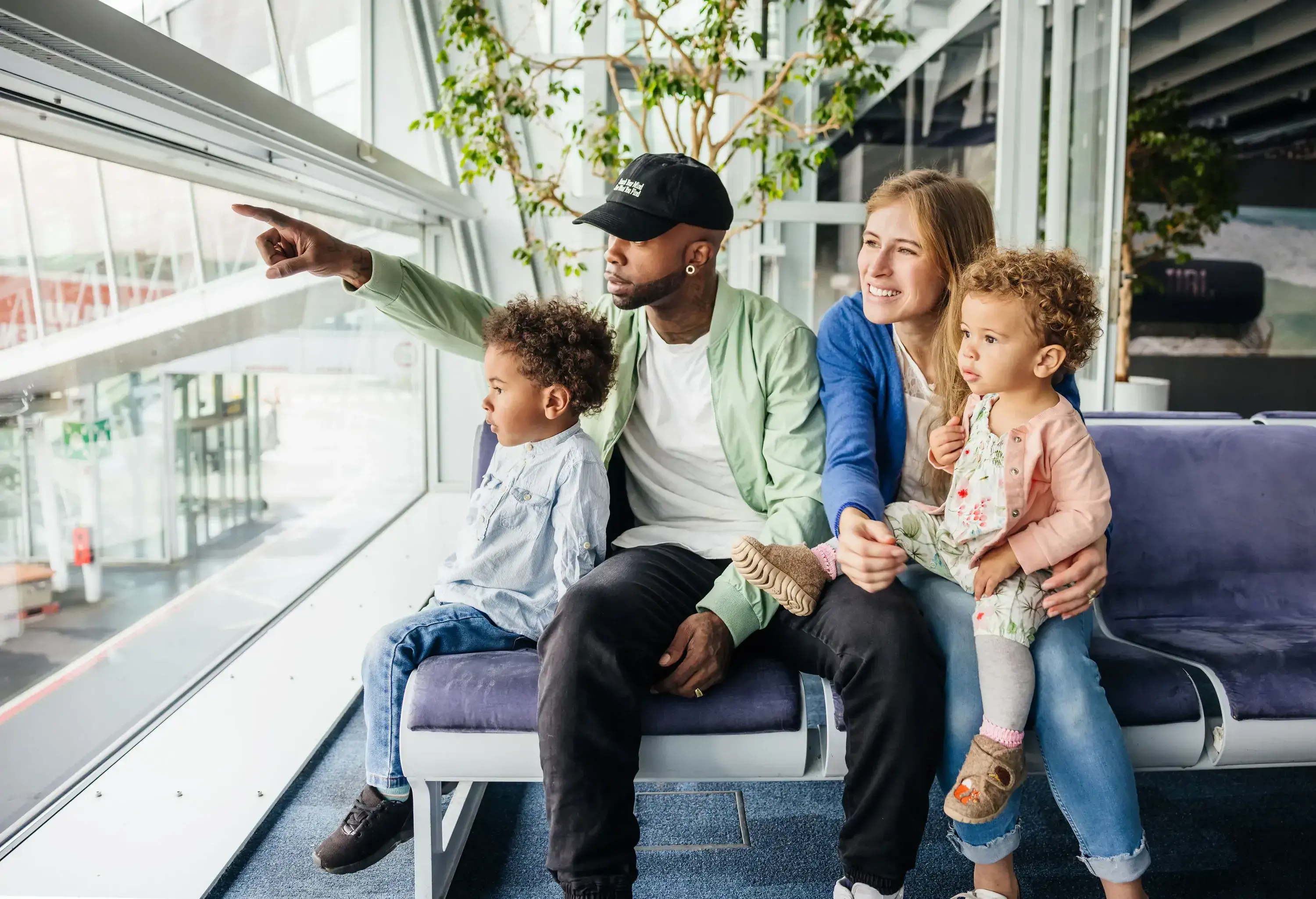
Sprinting through the airport late to your gate is a physical and emotional stress no one needs before a long flight. Bag drop lines can be long. Security lines can be even longer. And gate locations could send you hiking another 20 minutes to the other side of the terminal.
You should arrive at least two hours early for domestic flights and three hours for international.
Skip the queues.
If queueing isn’t your bag, you have options. Many airline reward schemes and memberships come with fast pass access through security. Trusted Traveler Programs like TSA Precheck and Global Entry, and private memberships like CLEAR, can also greatly reduce the time you need at the airport pre-flight.
Different programs and memberships come with different levels of access at different price points. So which works best for you will depend on your travel habits.
Hack the crowds.

Much of the time, airports heave with people. Most have paid-access lounges that can be surprisingly good value if you’ve got a few hours to kill. Not only are they an escape from the crowds and a comfy place to sit and work, but with free food and drink they can work out a similar price to a few hours spent in an airport bar or restaurant.
If you want to avoid airplane food and eat in the terminal, food apps like Grab let you pre-order from restaurants in the terminal and avoid queueing for your food.
Coming by car?
If you’re traveling to the airport in your own car, book your parking spot well in advance and pay close attention to where the car park is located. Many are off-site and a shuttle ride away from the terminal, so factor that into your timings.
Tips for flying: onboard the plane.
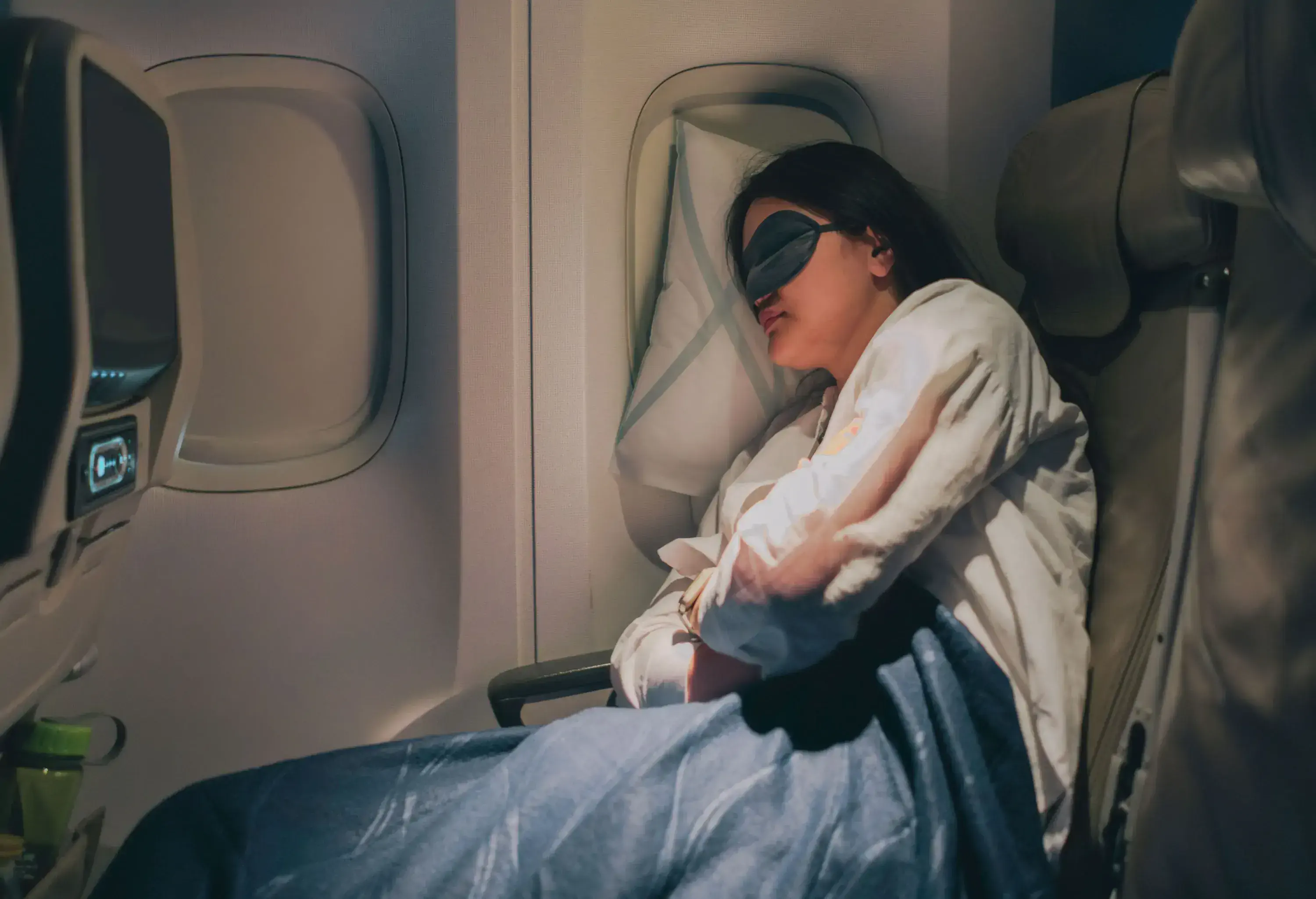
With the airport conquered and boarding successful, it’s time to turn your attention to the journey itself. Comfort is the key to everything, from what to wear to where to sit. And remember the golden rule: hydrate!
Wear the right clothes.
- Wear loose layers – Some of the most common discomforts and even health concerns on planes come from wearing clothing that restricts circulation. Loose-fitting clothes are a much smarter option, especially for longer flights. They also make it easy to dress in layers so you can quickly adapt to those annoying cabin temperature changes.
- Bring an extra sweatshirt – It seems obvious, but a sweatshirt is versatile and comfortable. If you find yourself in the chillier bulkhead or emergency seats, having an extra layer can be a godsend. If not, it’s something soft to lean your head on or wrap around the notoriously hard armrests.
- Pack some chunky socks – On long flights, taking your shoes off will allow for better circulation and keep your feet comfier. Barefoot is a big no-no though. Go for a pair of warm, chunky socks instead. Even better, get a pair with a grippy sole so you can wear them to the restroom.
- Create your own cocoon – A quality eye mask (silk is best as it lets your skin breathe) and good set of earplugs give you the best chance of getting some shuteye. Noise-canceling headphones are great for blocking out the environment around you but get in the way when trying to sleep.
- Pack a small pillow – Okay not exactly clothing, but a pillow feels like an extension of your comfy kit once on board. Look for pillows designed for air travel. There are lots to try, from spongey neck pillows to inflatables, wraparounds and all manner of ergonomic designs. Depending on the type you have, you can also use it to cushion your elbows, lower back or even your rear end.
Stretch and move.
The longer the flight, the longer your body will remain in an unnatural, cramped position. That’s not good for comfort, and it’s not good for your health. Regular mini stretching sessions in your seat can work wonders. Rotate your head, stretch and move your ankles, wrists, neck and shoulders to improve circulation and ease cramp.
On longer flights make sure to get up every couple of hours and take a stroll around the plane. Getting the circulation going and muscles moving is refreshing and restorative – even if it’s just a trip to the restroom.
Keep it hygienic.
Planes are notorious for not being the most hygienic environments. Cleans between flights are often cursory at best and there are lots of surfaces and nooks for dirt and germs to gather. A pack of disinfecting wipes and a bottle of hand sanitizer go a long way to making your trip more sanitary.
Don’t just wipe down your fold-out tray. Get to work on the armrests, touchscreen and, if you have one, particularly the entertainment system remote control. Take some moisturizer too, as hand sanitizer and the cabin air can quickly dry out skin.
Fight jet lag.
Jet lag is a side effect of long-haul travel that’s hard to predict and prevent. But you can take steps to reduce its effects. On board, the key is to drink plenty of water, eat small meals, take naps and avoid too much caffeine.
You can tackle jet lag in the run up to your trip too. If you’re flying to a dramatically different time zone, adjusting your sleep schedule in advance can help. Apps like Timeshifter help you set sleep schedules so your body can acclimatize to the new time zone slowly and reduce the sudden shock of day mixing with night.
Get going!
Now that you’re fully prepared for your flight experience, check out this year’s travel trends and begin planning without worry. If your scheduling window is still wide open, consider booking your getaway during slower travel months to avoid crowds and score lower rates on everything from hotels to activities.
Some of our favorite flight routes.
- Flights to New York
- Flights to Orlando
- Flights to London
- Flights to Seattle
- Flights to Fort Lauderdale
Tips for flying FAQs.
As chaotic as it looks, the boarding process is actually pretty simple. Most major US airlines board by group or zone, depending on which airline alliance you’re flying with. As long as you know your zone and pay attention to announcements and signs, you shouldn’t have any problems.
Your group or zone will be on your boarding pass. Attempt to board before you’re called will usually fail when the gate crew check your pass.
Most boarding doors close at least 15 to 20 minutes before the scheduled departure time. Once closed, they can’t be reopened, no matter how much a passenger asks and even if you’re only a minute late. To be on the safe and stress-free side, keep a close eye on gate announcements at the airport.
Once your gate is announced, head there ASAP – ideally around 30 minutes before boarding. There are usually restrooms close to the gates, so it’s a good time to answer the call of nature and avoid queues on board.
For domestic flights in the US, you’ll need ID for check-in and security, but not at the boarding gate. International flights typically require you to show your passport again while boarding, so keep it handy. All flights will require your boarding pass, either printed or digital.
Having your credit card with you is always a good idea when traveling internationally. And in some countries you can also use it as a backup ID should you need it.
If you’ve familiarized yourself with all of the tips for flying above, the only thing left to do on the plane is to make yourself as comfortable as possible and relax. Pass the time with in-flight entertainment, reading, work or if you can, sleep. Enjoy responsible snacks and drinks that won’t stress your body, and don’t fret about things you can’t control.
Above all, always do what cabin crew instructs. They’re the ultimate authorities in the air and you’re legally obligated to comply with their instructions.
There’s no guaranteed way to avoid jet lag. Everyone is different and reacts differently to long flights, changing time zones and the physical stresses of flying. There are steps you can take to reduce its effects though, as outlined by the CDC.
Adjust your sleep patterns in advance to reduce the impact of new time zones. During travel, eat small meals to avoid stomach issues, avoid alcohol as it hinders restful sleep, drink lots of water, drink caffeine strategically. And if you have to sleep during daylight hours, take short naps so you don’t impact your night sleep too much.
The TSA states that: “Each passenger can carry liquids, gels and aerosols in travel-size containers that are 3.4 ounces or 100 milliliters. Each passenger is limited to one quart-size bag of liquids, gels and aerosols. Common travel items that must comply with the 3-1-1 liquids rule include toothpaste, shampoo, conditioner, mouthwash and lotion.”

